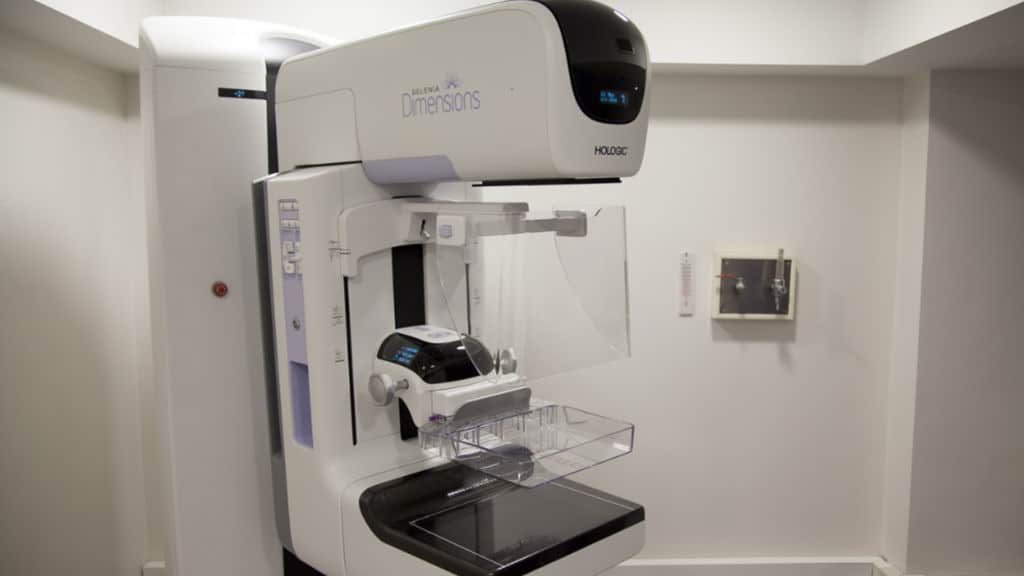Have you ever wondered (or worried) about what it’s like to get a mammogram? You know it’s a potent weapon against breast cancer, but you still feel apprehensive.
According to cancer.net, the official website of the American Society of Clinical Oncology (ASCO) and also the world’s foremost organization of cancer physicians, more than 63,000 women will be diagnosed with ductal carcinoma in situ, a non-invasive form of breast cancer.
Additionally, almost 270,000 will be diagnosed with an invasive form of the disease. If left untreated, the condition is likely to spread through the blood and lymph systems. Then, it could move on to other parts of the body.
To say that breast cancer can significantly impact a woman’s health is a gross understatement. Aside from skin cancer, breast cancer is the most commonly diagnosed form of cancer in women. Indeed, that fact is accurate both in America and around the world.
So let’s put this into a better perspective. The World Cancer Research Fund revealed in a study that, worldwide, the total number of new breast cancer cases in women increased by 25.4 percent in 2018.
So what is the best way for women to go about reducing their risk of developing this life-altering disease? It’s by getting regular mammograms.
WHAT IS A MAMMOGRAM?
For those who are not familiar with mammograms, they are non-invasive medical exams used to determine whether or not a woman’s breast tissue contains cancer cells. These screenings generally take about 20 minutes and involve little to no downtime. Therefore, you can get checked and then go about your day after completing your testing.
WHAT SHOULD YOU EXPECT DURING A MAMMOGRAM?
So it’s admittedly not uncommon to feel some level of anxiety when it comes to medical testing. However, mammograms are quite safe. Radiology labs perform this test routinely in the United States and across the globs.
According to a study published by Forbes, a global media company and an online resource for information related to business, investing, technology, entrepreneurship, leadership, and lifestyle, doctors order over 37 million mammograms every year in America. And while global statistics are not available, it is probably safe to assume that just as many of these exams are conducted in other parts of the world as well. With that, let’s take a closer look at what these life-saving exams entail.
GETTING A MAMMOGRAM: STEP ONE
Although this part is evident, for the sake of thoroughness, it is still worth mentioning. The first step in getting a mammogram will entail removing your blouse or shirt as well as your bra. However, you will be given a medical gown to at least partially cover yourself before the exam officially gets underway.
GETTING A MAMMOGRAM: STEP TWO
The x-ray technician will ask you to stand in front of an x-ray machine. Once instructed, you will place one breast at a time on to a plastic plate. Your technician will place a second plate on top of it. While in-between these two plates, the tissue will become extremely flat. But that flattening of the tissue is what will make it possible for the x-ray machine to detect changes in the breast tissue.
If your physician suspects breast cancer, they will likely recommend a biopsy. As far as pain is concerned, many women who have undergone a mammogram report that their breasts felt tender immediately following the exam. However, they explained that the discomfort dissipates quickly.
WHAT YOU SHOULD KNOW ABOUT BREAST BIOPSIES
For those who are not familiar with breast biopsies, they are specialized tests that require removing fluid and tissue from the breast. They send the collected materials to a lab where a technician reviews them under a microscope to look for any cancer cells.
While they may sound terrifying, doctors typically perform this test using a combination of local anesthesia and some form of sedation. That combo makes the entire process relatively painless.
Also worth noting, a study published by Planned Parenthood, a nonprofit organization that provides reproductive health care in America, less than 1 in 10 women who have a biopsy are ever actually diagnosed with breast cancer. In addition to cutting away and draining fluid from the breast, a core-needle biopsy can also be used to determine whether or not a woman has breast cancer. This process involves removing tissue from the breast via a hollow needle.
HOW TO MINIMIZE DISCOMFORT DURING YOUR MAMMOGRAM
While everyone has a different threshold when it comes to tolerances, most will agree that having one’s breast flattened can cause some real discomfort. Fortunately, there are several ways to reduce and possibly avoid the pain commonly associated with mammograms. First and foremost, it is in your best interest to go to a quality clinic.
To that point, breastcancer.org encourages women who are considering this type of breast screening to visit a clinic that is accredited by the American College of Radiology. And it shouldn’t be too hard to find one, especially given the fact that the organization has accredited more than 38,000 facilities since 1987. After deciding on a clinic, you should practice the following before your exam to help minimize pain:
1 – Over-the-counter medication
Taking acetaminophen or ibuprofen an hour before a mammogram-based breast exam to help reduce breast discomfort.
2 – Padding
Many clinics are aware that a mammogram-based breast exam is not the most comfortable experience for a woman. Therefore, many of them will use padded plates used on their x-ray machines. This way, when a woman places her breast in-between these plates, she is less likely to experience significant pain or discomfort.
3 – Not smoking
If you’re a smoker, you have yet another reason to kick the habit. According to a 2016 study published by the National Institute of Health, smoking can make breast tissue more sensitive. Of course, such sensitivity is the last thing you want to experience before a breast screening.
4 – Limiting caffeine
Similar to smoking, consuming too much caffeine can also increase breast sensitivity. Thus, it’s a good idea to avoid tea, soda, coffee, or caffeinated drinks before your breast screening.
5 – Sharing your medical history
If you had painful mammograms in the past or have fibrocystic breasts, share this information with your medical practitioner. When provided with this information, most practitioners will take additional steps to ensure you are as comfortable as possible during your screening.
6 – Breathing
Although you may be feeling slightly anxious during your screening, it is best to avoid heavy breathing. Several studies show that taking slow, deep breaths and calmly exhaling can help ease tension-related breast pain. Beyond that, doing so helps produce better and more accurate test results.
7 – Breastfeeding
Although a mammogram does not diminish a woman’s ability to breastfeed her baby, lactation has been shown to make breast very sensitive. As such, most physicians will encourage women to postpone getting a mammogram for three months after they have stopped breastfeeding. Of course, this does not apply to a woman who notices a lump in her breast or has other reasons to believe that they may have developed breast-related cancer.
WHO SHOULD CONSIDER GETTING A MAMMOGRAM?
Ideally, any woman who is concerned with staying on top of her health and living a long, healthy life should make it a point to schedule regular mammograms. However, they are especially beneficial to women that have an average risk of developing breast cancer, which, according to the American College of Physicians, includes women who have:
- A history of breast-related cancer
- Lesions on their breasts
- Previously undergone chest radiation therapy
- a genetic predisposition to breast-related cancer
Also, the American Cancer Society recommends the following when it comes to how often women should schedule these exams:
- Once per year for women between the ages of 45 to 54
- Every two years for women 55 and over
Some sources may argue that regular breast screens are unnecessary once a woman reaches the age of 75. However, the information published by the American Cancer Society states differently. In short, as long as a woman expects to live for at least ten more years, she should continue getting regular screenings for breast-related cancer.
 FINAL THOUGHTS ON OVERCOMING FEAR OF A MAMMOGRAM
FINAL THOUGHTS ON OVERCOMING FEAR OF A MAMMOGRAM
Although they rank pretty high when it comes to unpleasant experiences, mammograms can save a woman’s life. Aside from the slight pain and discomfort associated with these breast screenings, there are very few downsides involved in getting them.
Most major health insurance providers cover the cost of this test on a prescribed schedule, according to age. Check with your insurance provider before your test.
Additionally, these screenings take only a few minutes to complete. Furthermore, should the test yield a positive result, an oncologist can quickly start cancer-fighting treatments before the disease spreads.


















